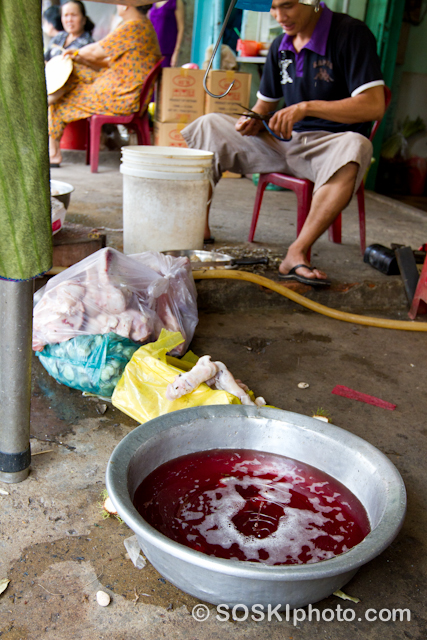Blood drips into a pan as freshly butchered meat hangs for sale in Chinatown, Ho Chi Minh City, Vietnam.
Vietnamese street markets are raw and provide the necessities for life. The street markets are open daily, starting before sunrise and closing after 10 pm. Activity is highest early in the morning before people head to work, but the pace is consistent througout the day. Its not uncommon to see three different family members selling goods at the same shop througout the day (every family member has their own prices).
The fruit is ripe, the meat recently butchered, and the bread still warm from the oven. There are no rules or regulations to follow concerning the color or size of the fruit or the number of flies roaming the meat. With minimal access to refrigerators, food is prepared and purchased daily.
Markets are established through a series of Shop Houses, or long and narrow houses with the front room used as a store front. This building style originated from China, making its way into Vietnam through China's 1,000 year control.
The photo above shows the general layout of a street market butcher. The owner is in the background trimming chunks of beef with scissors, using the white bucket as storage. The vendor tosses parts of the cow he cannot sell into a pile just in front of him. In the foreground, there is a catch pan for the blood dripping from the freshly butchered meat hanging on the table above. The catch pan is a luxury item and keeps the market clean. Other meat vendors I have visited throughout Vietnam did not have a catch can and spilt blood made the market extemely messy.


No comments:
Post a Comment